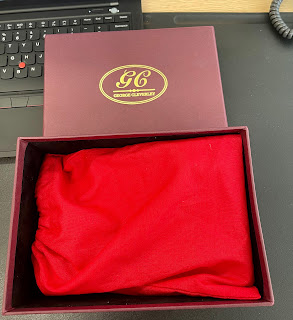On December 10th 1786 a strong gale in the English Channel forced the Danish Brigantine the Metta Catharina von Flensburg to seek shelter in Plymouth Sound in south west England. The cargo was leather and hemp from St. Petersburg Russia bound for the port of Genoa. During the heavy storm the frigate broke anchor and was swept ashore and sank on the Cornish side of Plymouth Sound. All the crew made it safely to land but the ship and cargo were lost for more than 200 years.
In 1973 divers from the Plymouth branch of the British sub -aqua club were searching for the wreck of H.M.S. Harwich which had foundered in 1691. The search concentrated on the slopes of a sunken, prehistoric river valley below Battery Buoy which forms the deep-water channel between Drake’s Island and Cornwall. In shallow water, about 500 yards from the shore at a depth of 30 metres, they found an encrusted ship’s bell. It was lifted out and cleaned, enabling the wreck to be provisionally identified as the “Catharina von Flensburg”. found a ships bell 30 metres below the surface and it identified the vessel. However, extensive research would be needed before the ship’s identity could be proved beyond doubt.
Flensburg City Museum confirmed that the vessel had been built in Flensburg fjord (then in Denmark) in 1782 and owned by Hinrick Lorck and Knut Andersen from then until 1786. This short period of ownership suggests that the boat may have been wrecked in 1786. Local archives from that year were searched and the full story of the last voyage of the brigantine was discovered in an article from the “Sherborne Mercury” of that year.
Further underwater investigation revealed part of the rigging and then the cargo – bundles of hides littering the seabed, remarkably preserved after two hundred years immersion in black mud. More may still be buried in the mud, their state of preservation improving in direct relation to the depth at which they are buried. The hides vary in size, some as large as cattle, complete with head and tail and marked with the tanner’s initials.
Investigation by the British Leather Manufacturers Research Association has confirmed that the leather is almost certainly reindeer tanned in the traditional Russian way of soaking in pits using willow bark and birch tar oil which gives it the characteristic aroma and ability to resist water.
Perfectly preserved underwater, it is a beautiful example of the bygone Russian tanning technique. Cured in baths of rye or oat flour and yeast then hand embossed with varying styles of cross hatching before being soaked in seal oil and birch tan oil, this technique could never be replicated and is lost to this day. The leather is marvellously supple and its durability has been enhanced by its two centuries of inundation in black mud. The colour varies from a rich claret to a lighter sienna and most of the hides have a crossed hatched grain embossed by hand. The same diced grain can be seen on the upholstery and bookbindings of the period, the famous “Russia” leather being renowned for its ability to resist water and repel insects. With the leather being in tight rolls helped to keep it from rotting away too.
Over the years, I have tried to reduce the number of items I collect besides vintage watches. However, there is an exception as these products have special meaning (the lost art of making Russian Reindeer leather) and being a ex-history student, the interesting historical significance of the product has given me added motivation to keep them. Below are some examples which I have managed to gather through out the years from overseas conisiting of two cross shoulder bag, one filiofax and one name card holders.
This article is prepared from all the above mentioned raw materials except calfskins. After washing and scraping, the hides are treated with ash. then washed, passed through the stamping mill, pared, pressed, tanned in weak liquor and then in ooze, and by sprinkling; it is either white, red or black. The best hides are used for the white leather which, when tanned, is smeared on the flesh side with a mixture of birch tar and seal grease. The red Russia leather is prepared in the same way, but when dried is coated with a solution of alum and dyed with red sandalwood. The black leather is dyed after tanning with some salts of iron and then smeared on the flesh side with a mixture of birch tar and calf grease. This smearing is repeated, if the so-called tarred Russia leather is required. All this class of goods undergoes various finishing processes to give the requisite appearance. These finishing operations are frequently repeated several times ; the dried hides are softened, kneaded, pared with a paring knife, stuffed and rolled upon grained boards to impart a given design to their surface, either fine or coarse shagreen, striped or fancy patterns ; if however a smooth or polished surface is required the face is rubbed with glass or stone. When finished the hide is slightly greased with seal grease or tallow. Black tarred goods are smeared with a mixture of tar and grease. Smooth or small grained white Russia leather is principally used for soldiers boots and cartridge pouches, trunks and bags. Red grained Russia leather is sold in Asia and also exported in considerable quantities to western Europe, where it is much prized by foreigners who call it Russia leather and use it for making a variety of small articles, such as purses and cigar cases, for which Vienna is particularly famed. Black Russia leather is dressed smooth or grained and is used by harness makers, trunk makers, coach builders, and also for making ordinary boots and shoes.







.png)

.png)

.png)


























No comments:
Post a Comment